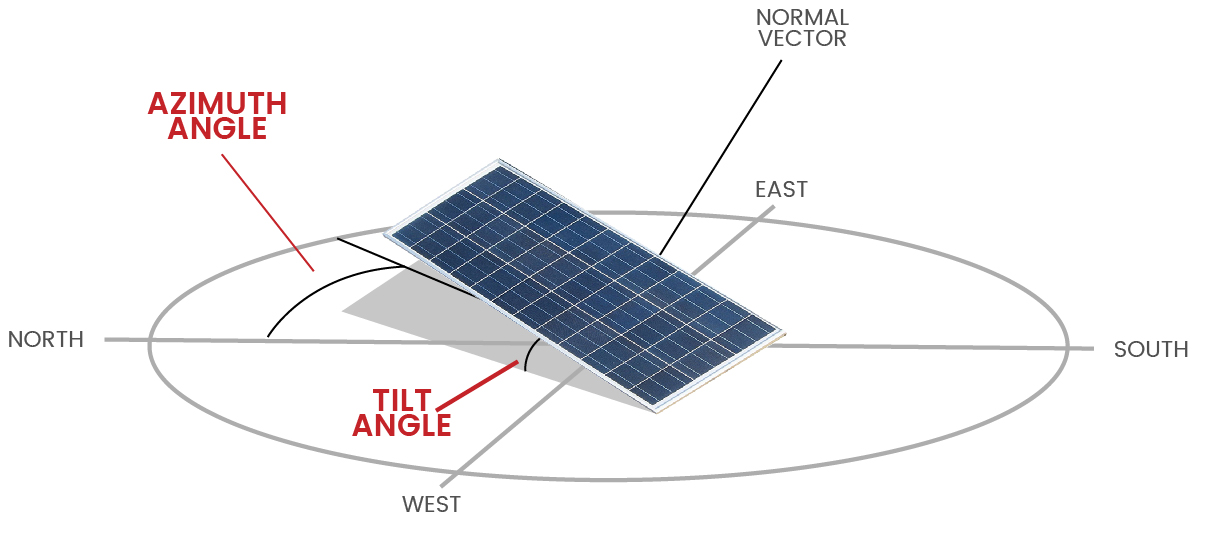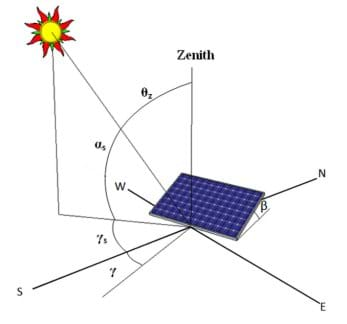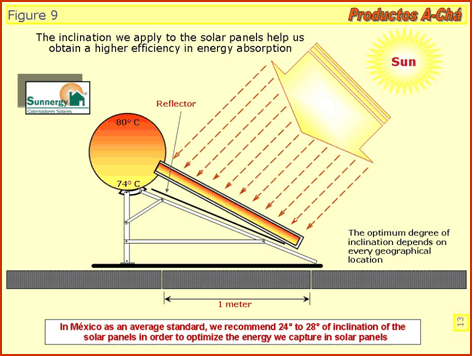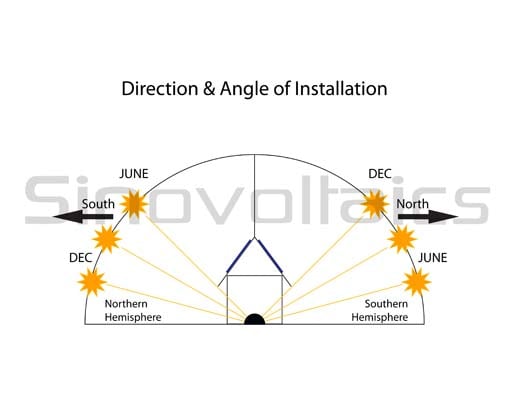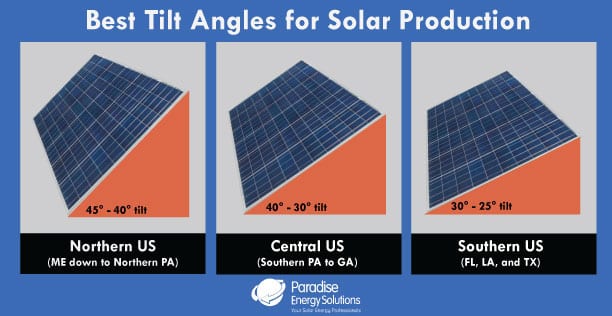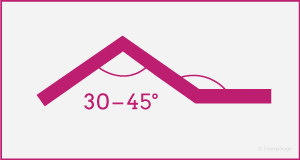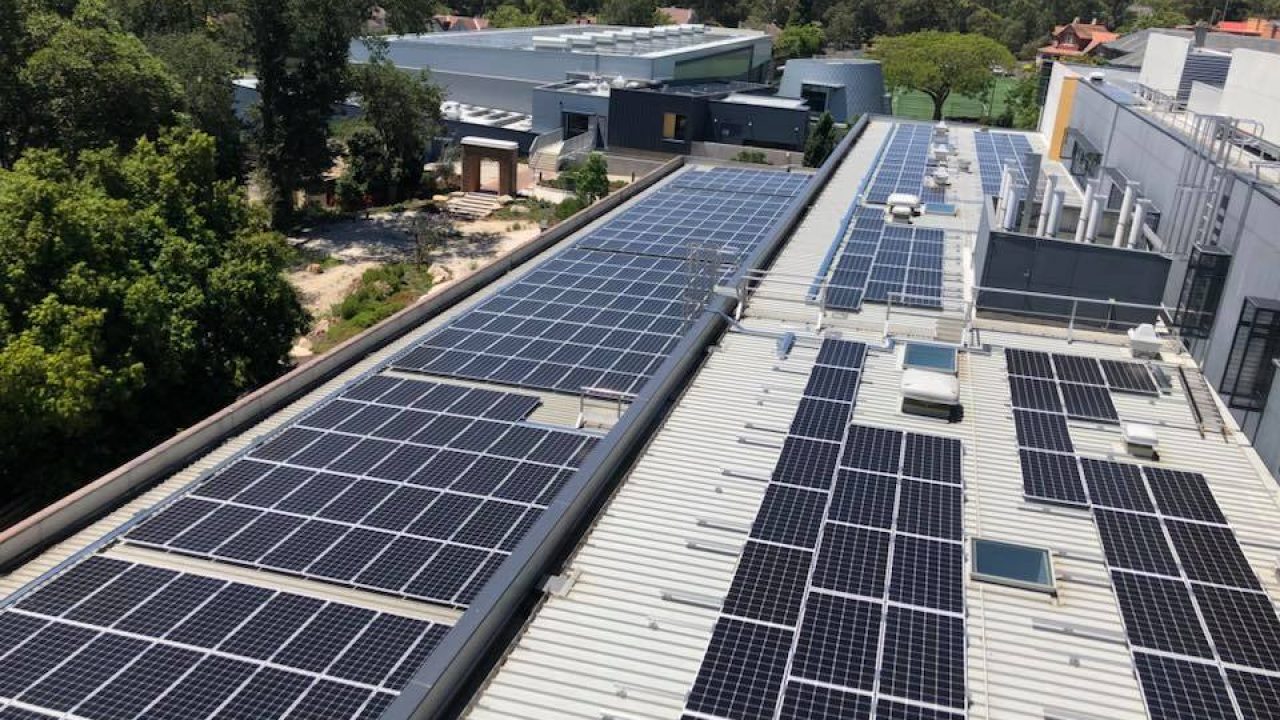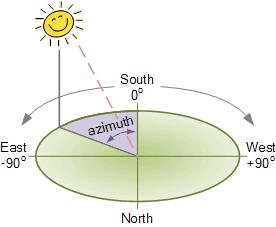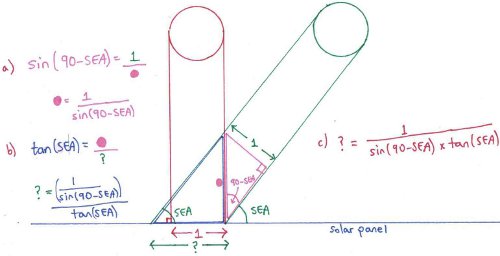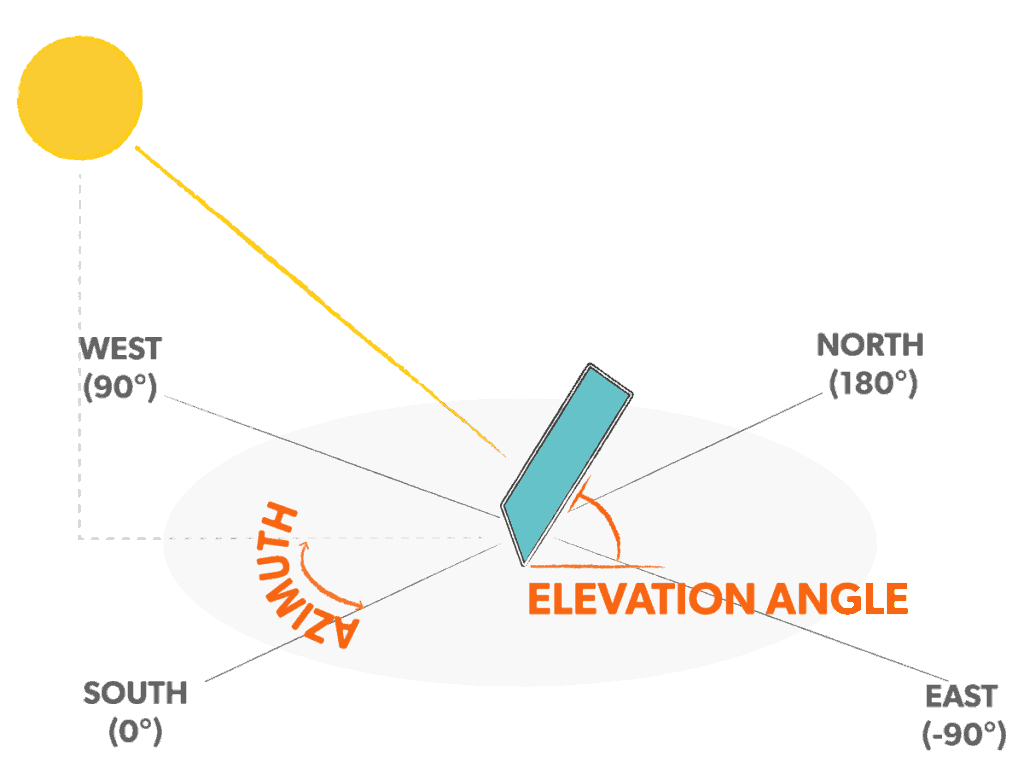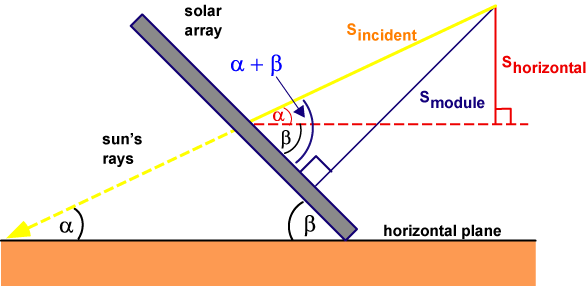Efficiency Solar Panels Different Angles

The solar panel angle of your solar system is different depending on which part of the world you are.
Efficiency solar panels different angles. This is because the sun is always in the southern half of the sky in the northern hemisphere. Solar angles tracking systems. The angle between a photovoltaic pv panel and the sun affects the efficiency of the panel. Solar panel efficiency is a measure of the amount of solar energy irradiation which falls on a panel surface and is converted into electricity due to the many recent advances in solar cell technology over the last 5 years average panel conversion efficiency has increased from 15 to 20.
A comparison of data in two us cities has been completed to exhibit the importance of a solar pv array s tilt angle. The sun moves across the sky and will be low or high depending on the time of the day and the season. If it s standing upright perpendicular to the ground it is at a 90 angle. Orientation of the panels.
For the best results solar panels should be oriented towards the south. While the angle of your solar panels is important a more important factor in your energy production is going to be the direction your panels face. The effect of an array s tilt angle on solar pv energy output may be up to 20 compared to that of flat installations. Solar panel angle is another way of describing the vertical tilt of your pv system.
The solar panel angle can affect the amount of solar electricity you generate and is based on two factors. When a solar system is level with the ground it has no tilt. Given the same amount of sunlight shining for the same duration of time on two solar panels with different efficiency ratings the more efficient panel will produce more electricity than the less efficient panel. That is indeed the best angle at noon on that day but it does not take into account the best angle for capturing solar energy at other times of the day.
The highest efficiency solar panels on the market today can reach almost 23 percent efficiency. For example richard perez and sam coleman in pv module angles home power n 34 p 14 16 1993 recommend an angle that puts the panel perpendicular to the sun s rays at noon. As a general rule of thumb energy output can be optimized by adding 15 degrees to a site s latitude in the winter and subtracting 15 degrees to a site s. Solar panels have been consistently increasing in efficiency at about 5 annually since 2010.
This large jump in efficiency resulted in the power output of a standard size. Solar panels give the highest energy output when they are directly facing the sun. Solar panel efficiency is a measurement of a solar panel s ability to convert sunlight into usable electricity. Factors that affect solar panel efficiency.
For that reason the ideal angle is never fixed.


